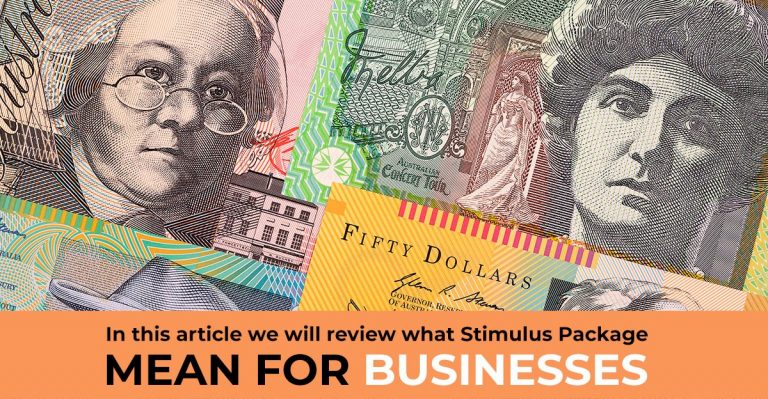The package has been marketed as a measure to protect the economy by maintaining confidence, supporting investment and keeping people in their jobs.
Let’s look at these incentives in detail:
TAX INCENTIVES
- From Thursday 12 March 2020, the instant asset write-off threshold has been increased from $30,000 (for businesses with an aggregated turnover of less than $50 million) to $150,000 (for businesses with an aggregated turnover of less than $500 million) until 30 June 2020.
- A time-limited 15-month investment incentive (through to 30 June 2021) which will operate to accelerate certain depreciation deductions.
This measure will also be available to businesses with a turnover of less than $500 million, which will be able to immediately deduct 50% of the cost of an eligible asset on installation, with existing depreciation rules applying to the balance of the asset’s cost. As announced, this measure is proposed to only apply to new depreciating assets first used, or installed ready for use, by 30 June 2021.
“ To simply explain this, assume that you buy some equipment for $500,000 before 30 June 2020 (each item costing less than $150,000) and you immediately write that entire cost off and pay tax on $500,000 (i.e. only $150,000 in tax) – that’s a 50 per cent discount to your tax. Essentially the $500,000 worth of equipment has cost you $350,000”
CASHFLOW MEASURES
- Small and medium-sized business entities and not-for-profits with aggregated annual turnover under $50 million turnover that employs workers will be eligible for these tax-free payments. Payments will now be a minimum of $20,000 up to $100,000 and extended to eligible not-for-profits (including charities).
- Government has set up a three-year funding facility for at least $90bn to be lent to authorised deposit-taking institutions (banks) at a fixed rate of 0.25%. The aim is to encourage lending to businesses to spend and invest, keeping workers in jobs.
- $15bn has been chipped in to enable smaller lenders to continue supporting Australian consumers and small businesses. While the RBA is looking to lend to authorised deposit-taking institutions, the Australian Office of Financial Management will skew the $15bn to smaller institutions and non-ADI lenders.
STAFF RETENTION
- Tax-free payments of up to $25,000 for eligible small and medium businesses (i.e., with a turnover of less than $50 million that employ staff) based on their PAYG withholding obligations.
- Jobkeeper Allowance – Under the JobKeeper Payment, businesses impacted by the Coronavirus will be able to access a subsidy from the Government to continue paying their employees. Affected employers will be able to claim a fortnightly payment of $1,500 per eligible employee from 30 March 2020, for a maximum period of 6 months.
- Wage subsidies to support the retention of apprentices and trainees – Employers with less than 20 full-time employees may be entitled to apply for Government funded wage subsidies amounting to 50% of an apprentice’s or trainee’s wage for up to nine months from 1 January 2020 to 30 September 2020. The maximum subsidy for each apprentice/trainee is $21,000.


GAINING COMPETITIVE EDGE THROUGH DIGITIZATION
- Many businesses have undergone some level of digital transformation recently and are now enjoying the benefits. From increased productivity to reduced costs, and greater customer experience, digital transformation has changed the way businesses around the world operate.
- The stimulus presents an opportunity to invest in the next wave of digital transformation with instant write-off. This could mean purchasing new infrastructure to keep up with growth experienced in newly transformed businesses, or further legacy technology upgrades to complete a modernization.
Please do not hesitate to contact our team if you wish to understand how your business can benefit from investing in technology based on your re-defined small to medium term goals.
| Contact Us Today |

